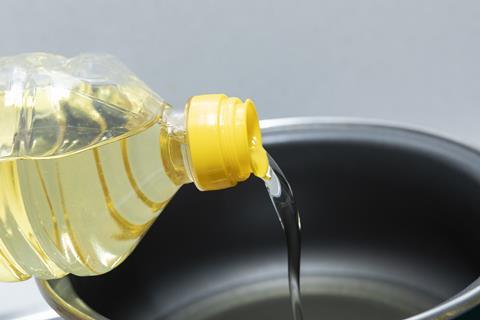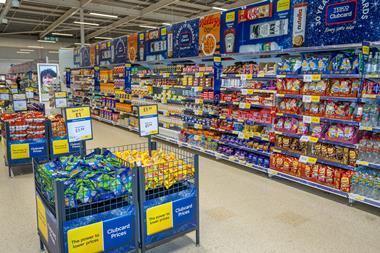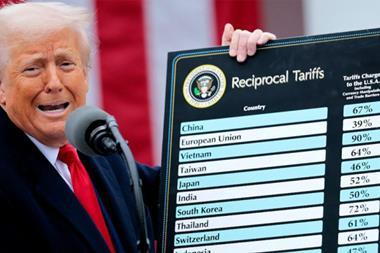Global warming, the war in Ukraine, and China’s slowdown are some of the crucial factors affecting food commodities in 2023
To a large extent, predictions for commodity prices in 2022 got it right. That is, the vast majority of them predicted prices would rise. The full extent of those rises, however, few saw coming.
While the retail price inflation that emerged from the unwinding of global Covid restrictions and subsequent supply chain woes were largely baked in by the time January rolled around last year, few predicted the situation would so quickly worsen as Russia invaded Ukraine just weeks later.
The conflict has disrupted supplies of grains, oils and natural gas, with costly consequences for businesses and individuals alike. And Rabobank experts believe this trend will carry over to this year, particularly during the winter months.
But for the year as a whole, the outlook for 2023 is marginally brighter. While global supply chains are still recovering from the effects of the pandemic, record levels of inflation have helped ease the demand pressure. While corporations and world leaders alike will be praying any upcoming recession is relatively shallow, the upside is that this will add further downward pressure on everything from energy to cocoa, according to Rabobank’s 2023 outlook report for agri-commodities. “With this in mind, we hold a bearish view for a number of agri-commodities.”
“We were seeing food prices increase from about March 2020 through to about March 2022, which really peaked in conjunction with Russia’s invasion of Ukraine,” says Rabobank senior commodity analyst Michael Magdovitz. Culminating in lower demand, “the majority of commodity prices we track across agriculture are declining”.
There are a few key factors at play, however, which will have a crucial impact on how much we’re all paying for our food in the months to come.

The Ukraine-Russia war
Much of the predicted drop in inflation this year is linked to an easing in wholesale gas prices. These shot up following the Russian invasion as western countries placed sanctions on Russian exports. And concerns around energy security and costs will not disappear completely as the war continues to drive volatility in natural gas and crude oil markets.
Nonetheless, natural gas in particular has “fallen a lot from the crazy levels that it was at” in 2022, says Magdovitz. This is good news for food prices, particularly those like bread that are reliant on hot ovens.
“If you look at the energy-intensive food-related industries, it reduces inflation pressure on these a lot.”
Lower gas prices will also be good news for farmers, who last year were forced to deal with mounting costs of the three Fs: fertiliser, feed, and fuel. That is not to say farmers will be able to buy fertiliser at pre-war prices. The price of fertilisers made from gas remains at “historic highs”, according to Matt Williams, land use analyst at the Energy & Climate Intelligence Unit (ECIU), meaning “Britain’s farmers could pay hundreds of millions of pounds more this year than normal”.
Read more:
-
In graphs: the ups and downs of commodity pricing to 2023
-
Should fmcg producers pass on the benefit of softening commodity prices?
-
Four pints of milk reaches all time high price point
Farmers already had to fork out an extra £760m for fertiliser over the course of 2021/2022 due to high gas prices, ECIU data shows, and in 2023, this is expected to reach £628m. “Farmers are staring down the barrel of another tough year,” Williams says.
The war in Ukraine has also devastated a huge proportion of winter and spring crops, such as wheat, barley, rye and rapeseed, which will be unable to recover in time to prop up this year’s supply. And while prices on related summer commodities such as wheat, corn and sunflower oil have fallen back since Russia and Ukraine agreed on the Black Sea Grain Initiative, these will remain higher than usual throughout 2023, says S&P’s Global 2023 Europe outlook report.
“We hold a bearish view for a number of agri-commodities”
In southern Europe, the climate breakdown is the greatest cause for concern for most farmers. Prolonged extreme drought episodes are disrupting production of both staples and cash crops, including olive oil in both Italy and Spain. “Drought [in the western Mediterranean] has had a huge impact on the crop, and we’ve already seen a massive increase in the cost of oil,” says Walter Zanre, CEO of Filippo Berio.
The oil markets have stabilised since demand peaked last year following Russia’s invasion. The halting of sunflower oil production in Ukraine led manufacturers to look for vegetable oil alternatives. But today, the greater threat is to production, which is now “about two to three months short of normal consumption levels”, says Zanre. As a result, “already high” prices will increase in 2023.
On the other side of the Atlantic, agri-businesses are well versed in the impacts of major dry spells. Over the past three years, the weather event La Niña has haunted global agriculture with drought in parts of the US, Argentina and southern Brazil affecting a number of crops including soybeans, corn and wheat. The overall effect is not only detrimental to the income of farmers, but drives prices higher.
Fortunately this year, La Niña is already showing signs of weakening, helping to bring prices down. The possibility of some more normal weather after it fades gives producer countries a chance to bump production and replenish stock. For example, crops in Brazil are currently experiencing good rainy weather, which will help the country increase soybean acreage by 5% this year, Rabobank’s Magdovitz says.
“It’s simply a factor of weak demand and resupply”
The situation in Argentina and some parts of the US is slightly more complex as the severe effects of La Niña will take time to recover, with wheat and soy stocks remaining at lower levels throughout 2023/2024. But Rabobank adds that lower production will not necessarily contribute to higher commodity prices because global demand too is weaker overall. “I think that there are some short-term considerations for weather risks, but realistically, a bunch of these commodities will see lower prices over the course of the next year. It’s simply a factor of weak demand and resupply.”
China-Taiwan
Fears of further disruption to global supply chains are bubbling up as recent tensions between China and Taiwan stoke concerns of a potential blockade of the Taiwan Strait. This would result in catastrophic implications for global trade, not unlike the ripple effects seen after Russia’s invasion of Ukraine. While the idea of a blockade that halts all outbound exports from Taiwan – a key exporter of semiconductors for which many industries from logistics to e-commerce rely – is still hypothetical, the analytics provider Rhodium Group estimates it could result in trade disruption costing “well over $2trn”, leaving “few countries untouched”.
The shortage of semiconductor chips during the early stages of Covid resulted in delayed deliveries, port congestion, and overall trade chaos. UK supermarkets selling electronics and appliances such as phones, fridges and microwaves suffered hugely from the shortages, as did other sectors, such as manufacturing and logistics.
The knock-on effects of a Taiwan Strait blockade would exacerbate those shortages to a “catastrophic” level, Rhodium Group says.
![]()
Latest UK government data shows total trade in goods and services between the UK and Taiwan was £8.1bn in the four quarters to the end of Q2 2022, an increase of 1.1% or £87m from the four quarters to the end of Q2 2021. “Almost all of this trade would be severely disrupted in the event of a blockade,” Rhodium Group wrote in a December report. “Ultimately, the full social and economic impacts of a chip shortage of that scale are incalculable, but they would likely be catastrophic.”
A crisis of this scale would shock the global economy and potentially trigger debt crises among China’s more fragile trade partners, who are already under pressure as a result of the country’s zero-Covid policy, which considerably slowed down demand in the past couple of years.
“It is the unfamiliar aftermath of that experience that teams will be grappling with”
On the flip side, reined-in demand has helped ease what many have considered the greatest disruption to containerised shipping supply chains since the 1950s. In 2022, congestion and delays at ports reduced compared with the year before, with the costs of shipping a 40 ft container from China to America’s west coast now $1,400, down 93% from its peak of $20,600 in September 2021, according to online freight marketplace Freightos.
S&P Global Market maritime & supply chain expert Peter Thirschwell says that beyond the dwindling port bottlenecks and the fall in freight rates from record heights, a more “profound change” has taken place. Disruption has now gone from periodic to constant, he argues in his latest S&P Global 2023 outlook essay, which has “damaged” trust in the supply chain.
“It is the unfamiliar aftermath of that experience that corporate leaders and logistics teams will be grappling with in 2023 and for years beyond.”
Commodities outlook: will food prices finally ease in 2023?
- 1
 Currently reading
Currently readingCommodities outlook: will food prices finally ease in 2023?
- 2





















No comments yet